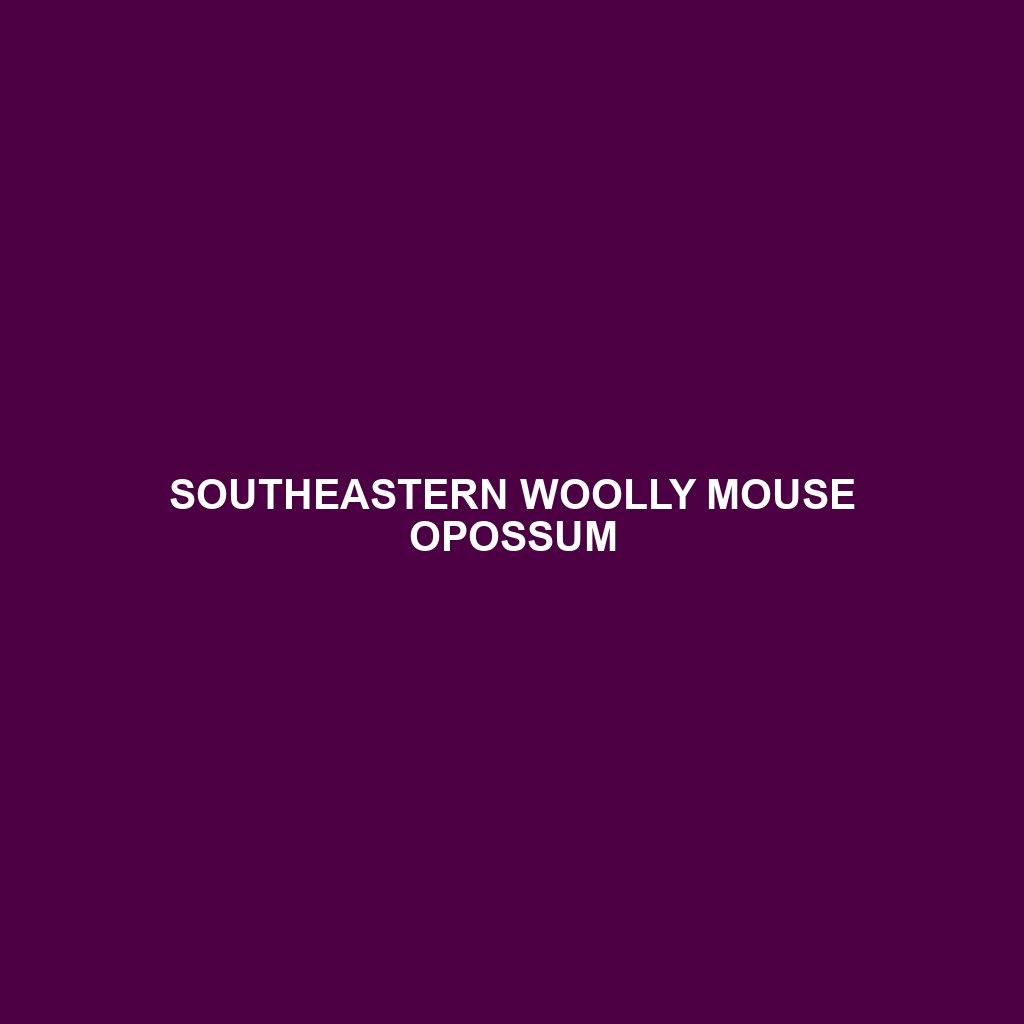Southeastern Woolly Mouse Opossum: A Comprehensive Overview
The Southeastern Woolly Mouse Opossum (Micoureus paraguayanus) is a small, nocturnal marsupial native to the forests of South America. Known for its woolly fur and agile arboreal lifestyle, this intriguing creature plays a vital role in its ecosystem.
Physical Characteristics
Size: Adult Southeastern Woolly Mouse Opossums typically measure between 10 and 15 cm (4-6 inches) in body length, with an additional tail length of 12 to 18 cm (5-7 inches).
Coloration: Their fur is generally soft and dense with a woolly texture, exhibiting a greyish-brown to reddish-brown coloration on the dorsal side, while the ventral side is usually lighter, ranging from white to pale grey.
Special Features: They possess large, round eyes adapted for nocturnal vision, and delicate, whisker-like vibrissae that help them sense their environment. Their prehensile tail is covered in fur at the base, with a naked tip, aiding in balance and grasping branches.
Behaviors
Social Interactions: While primarily solitary, these opossums may exhibit social behaviors during mating season or when a mother cares for her young. They communicate through a series of vocalizations, body postures, and grooming behaviors.
Feeding Habits: Southeastern Woolly Mouse Opossums are omnivorous, feeding on a varied diet that includes insects, fruits, nectar, and small vertebrates. They are particularly fond of foraging for food in the canopy, where they can avoid larger predators.
Ecological Roles: As omnivores, they help control insect populations and disperse seeds, contributing to the health of their forest habitats. Their role as prey for larger predators also makes them an integral part of the food web.
Habitats
Natural Habitat: These opossums are typically found in the tropical and subtropical forests of southeastern South America, including Brazil, Paraguay, and northern Argentina. They prefer dense, moist forests where they can utilize the tree canopy.
Adaptations: They are well-adapted to an arboreal lifestyle, with their prehensile tail and dexterous feet allowing them to navigate through the trees with ease. Their nocturnal habits help them avoid many diurnal predators.
Conservation Status
Current Status: The Southeastern Woolly Mouse Opossum is currently listed as a species of “Least Concern” by the IUCN Red List, primarily due to its wide distribution and presumed large population. However, habitat destruction and fragmentation pose ongoing threats to their population stability.
Fascinating Fun Facts
Southeastern Woolly Mouse Opossums have a remarkable ability to enter a state of torpor, reducing their metabolic rate to conserve energy during periods of food scarcity or extreme weather.
Despite their small size, these opossums are agile climbers, often seen leaping between branches and making use of their prehensile tails for stabilization.
The species is an important pollinator, particularly of certain night-blooming flowers, as they feed on nectar and inadvertently transfer pollen.
By understanding the unique attributes and ecological importance of the Southeastern Woolly Mouse Opossum, we can better appreciate the intricate balance of our forest ecosystems and the need to protect these fascinating creatures.
